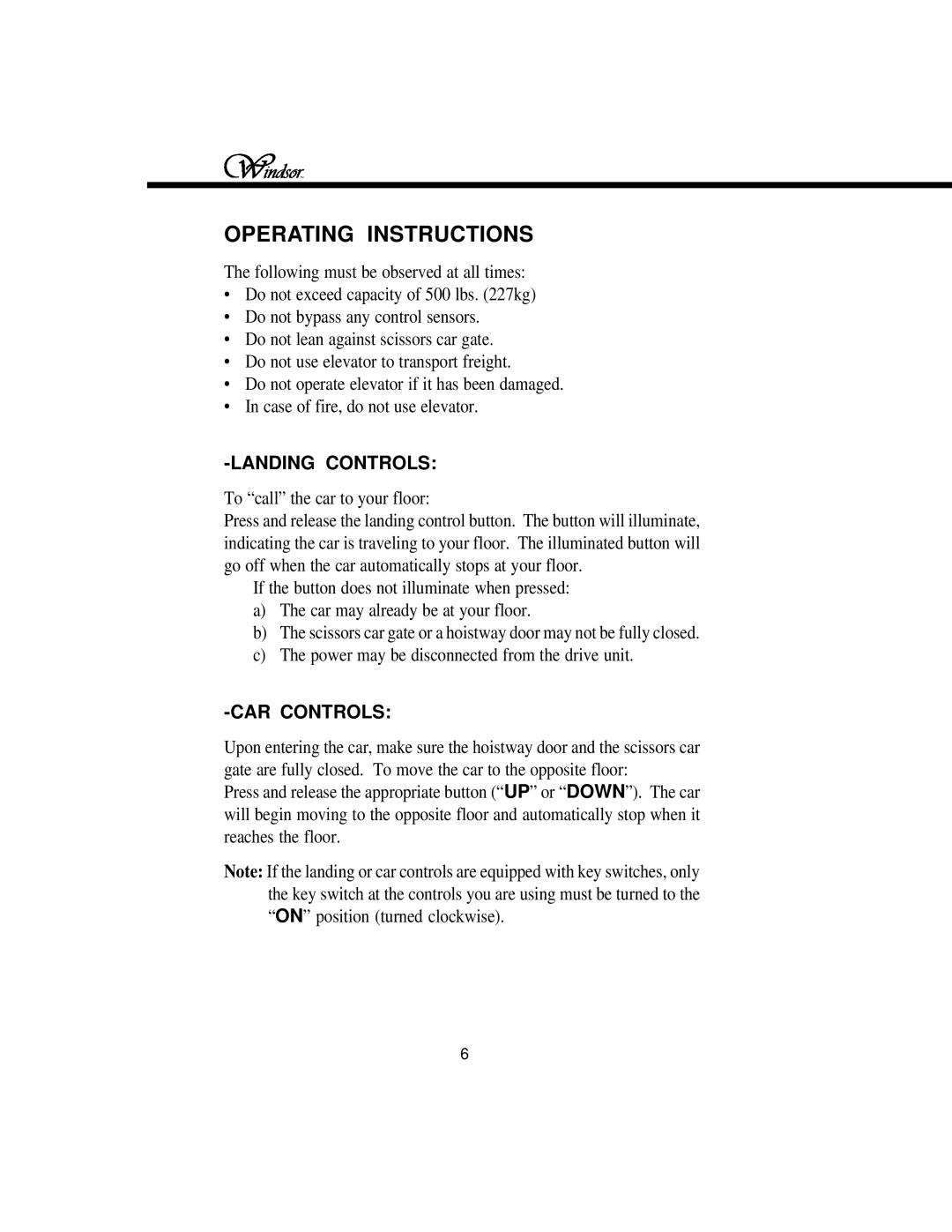Elevator specifications
Windsor Elevator is a prominent name in the vertical transportation industry, specializing in the manufacturing and installation of elevators, escalators, and moving walkways. With a legacy of innovation and commitment to quality, Windsor Elevator has established itself as a reliable choice for commercial, residential, and industrial applications.One of the standout features of Windsor Elevator is its diverse range of products tailored to meet the unique needs of its clients. The company offers high-speed elevators designed for skyscrapers, which optimize time efficiency and ensure smooth rides even at considerable heights. Their hydraulic elevators cater to low and mid-rise buildings, providing a cost-effective solution without compromising on performance. Furthermore, Windsor Elevator offers freight elevators specifically designed to handle heavy loads, making them ideal for warehouses and industrial settings.
Incorporating cutting-edge technology, Windsor Elevators enable advanced safety mechanisms and energy-efficient systems. The elevators are equipped with regenerative drives that reduce energy consumption by converting excess energy into electricity, which can be reused within the building. This focus on sustainability not only lowers operational costs for building owners but also aligns with global efforts toward environmental responsibility.
Windsor Elevator also emphasizes user-centric design, with features that enhance accessibility and comfort. Their elevators can be customized with various finishes and dimensions to fit specific architectural styles while also complying with ADA regulations. The user interface is designed for intuitive operation, with touchscreen controls and real-time information displays that keep passengers informed about their journey.
Safety is a cornerstone of Windsor Elevator's ethos, with features such as automatic leveling, emergency communication systems, and redundant safety mechanisms that ensure the well-being of passengers at all times. The installation and maintenance services provided by Windsor Elevator further guarantee that their systems operate efficiently and safely throughout their lifespan.
In conclusion, Windsor Elevator exemplifies excellence in the elevator industry through its innovative technologies, diverse product offerings, and unwavering dedication to safety and quality. With a focus on sustainability and user-friendly features, Windsor Elevator continues to shape the future of vertical transportation, catering to the evolving demands of modern architecture and urban development.
